To investigate Martian rocks for evidence of past life in advance of sending humans to work and live on the Red Planet

IMAGE CREDIT: NASA
Space news (missions to Mars: successor to Curiosity rover; Mars 2020 rover) – NASA’s Jet Propulsion Laboratory in Pasadena, California –
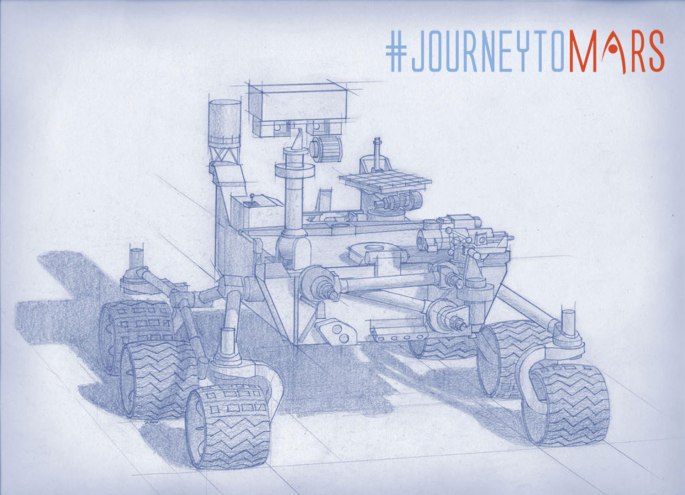
Credits: NASA/JPL-Caltech
NASA managers are looking forward to shifting gears on the Mars rover program in the 2020s. NASA’s Mars 2020 rover’s expected to arrive at the Red Planet around February 2021, carrying a science instrument package designed to build upon the success of NASA’s Mars Curiosity rover. It will investigate regions of the planet astrobiologists think were once favorable to microbial life, by collecting soil and rock samples, and then leaving them on the surface for a future Mars mission to collect for the possible return to Earth.
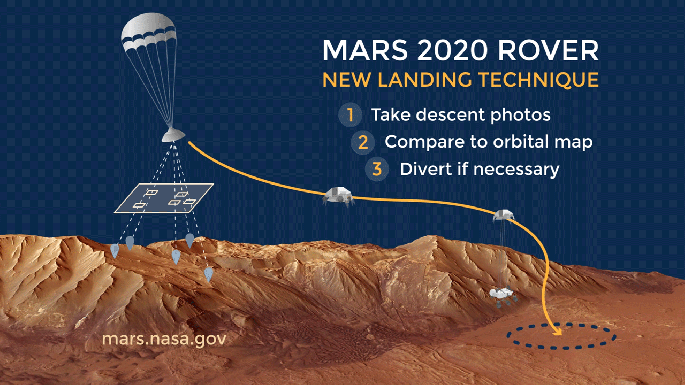
“The Mars 2020 rover is the first step in a potential multi-mission campaign to return carefully selected and sealed samples of Martian rocks and soil to Earth,” said Geoffrey Yoder, acting associate administrator of NASA’s Science Mission Directorate in Washington. “This mission marks a significant milestone in NASA’s Journey to Mars, to determine whether life has ever existed on Mars, and to advance our goal of sending humans to the Red Planet.”
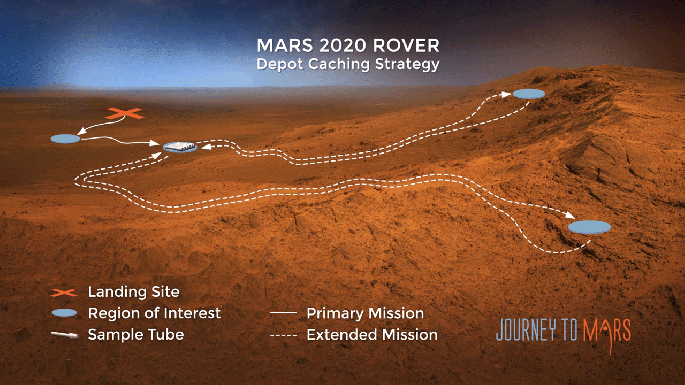
The Mars 2020 rover uses a depot caching strategy for its exploration of Mars. Credits: NASA/JPL
NASA engineers, scientists and mission planners are ready to begin final design and construction of the next Mars rover. In the end, Mars 2020 will look like its six-wheeled, one-ton predecessor, Curiosity, but with a science instrument package designed to begin a new phase of exploration of the surface of Mars. It will begin exploring specifically selected regions of the planet for signs of life and the resources needed for future colonists to survive. Using two science instruments mounted on the rover’s robotic arm and two instruments on the mast, NASA’s Mars 2020 rover’s expected to show us new things about the Red Planet.
Current plans call for the Mars 2020 rover to use an upgraded version of the same sky crane landing system used by Curiosity. Engineers and designers have added a few improvements to the system opening up more potential landing sites on Mars with this edition. Giving mission planners more options to explore the Red Planet to a greater degree and hopefully provide a few more answers to the questions we have all been asking ourselves about Mars.
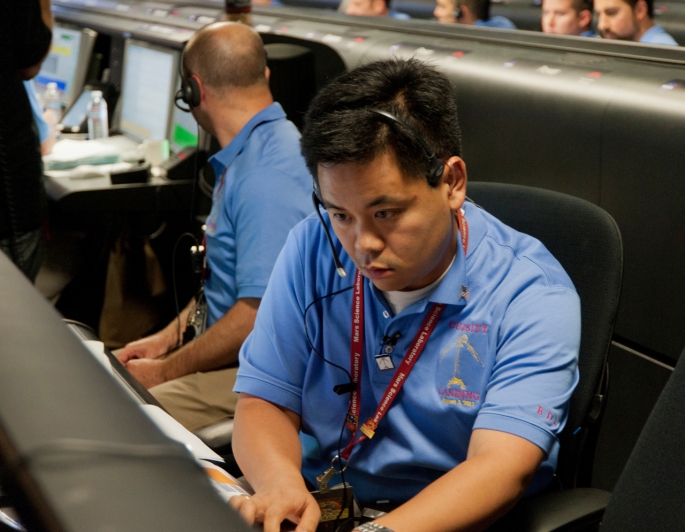
Date: 05 August/2012
Photographer: T. Wynne
“By adding what’s known as range trigger, we can specify where we want the parachute to open, not just at what velocity we want it to open,” said Allen Chen, Mars 2020 entry, descent and landing lead at NASA’s Jet Propulsion Laboratory (JPL) in Pasadena, California. “That shrinks our landing area by nearly half.”
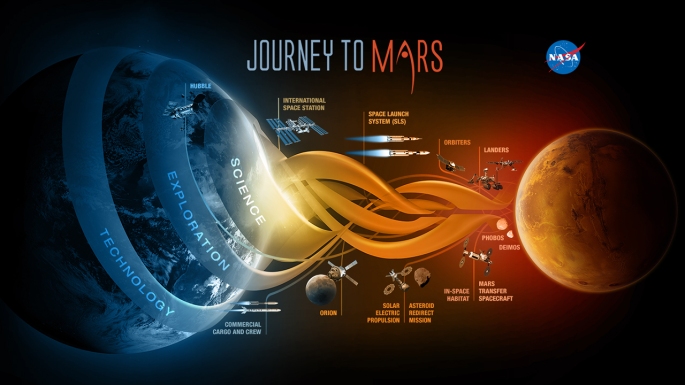
Engineers and designers have also added a suite of cameras and a microphone providing data onboard computers will analysis during descent and landing of the rover. This will help the spacecraft land in a safe zone and capture the sounds and imagery of the entry, descent, and landing as never before. We expect this data to eventually make for a thrilling video and improve the chances of future Mars missions.
“As it is descending, the spacecraft can tell whether it is headed for one of the unsafe zones and divert to safe ground nearby,” said Chen. “With this capability, we can now consider landing areas with unsafe zones that previously would have disqualified the whole area. Also, we can land closer to a specific science destination, for less driving after landing.”
“Nobody has ever seen what a parachute looks like as it is opening in the Martian atmosphere,” said JPL’s David Gruel, assistant flight system manager for the Mars 2020 mission. “So this will provide valuable engineering information.”
“This will be a great opportunity for the public to hear the sounds of Mars for the first time, and it could also provide useful engineering information,” said Mars 2020 Deputy Project Manager Matt Wallace of JPL.
Mars 2020 rover goes forward
As the optimist said, “So far, so good.” NASA has completed stage three of a four-stage approval process needed for the Mars 2020 rover to go for launch. Now engineers and designers get to work assembling the final systems of NASA’s next Mars rover. Fortunately, they have already done a lot of the work during the building of Curiosity, and even have some spare parts and hardware that should work just fine laying around somewhere in the Jet Propulsion Laboratory.
“Since Mars 2020 is leveraging the design and some spare hardware from Curiosity, a significant amount of the mission’s heritage components have already been built during Phases A and B,” said George Tahu, Mars 2020 program executive at NASA Headquarters in Washington. “With the KDP to enter Phase C completed, the project is proceeding with final design and construction of the new systems, as well as the rest of the heritage elements for the mission.”
Read and learn about the latest method astrophysicists have developed to help determine distances to objects on the other side of the Milky Way.
Learn more about the titanic, massive plasma jets astronomers have detected emanating from near some supermassive black holes.
Read about some of China’s contributions to the human journey to the beginning of space and time.
Read more about NASA’s Mars 2020 rover.
Join NASA’s journey to the beginning of space and time here.
Follow NASA’s Curiosity rover as it explores the surface of Mars.
Learn what NASA’s Spirit and Opportunity rovers have told us about the Red Planet here.
Learn more about NASA’s Jet Propulsion Laboratory.
